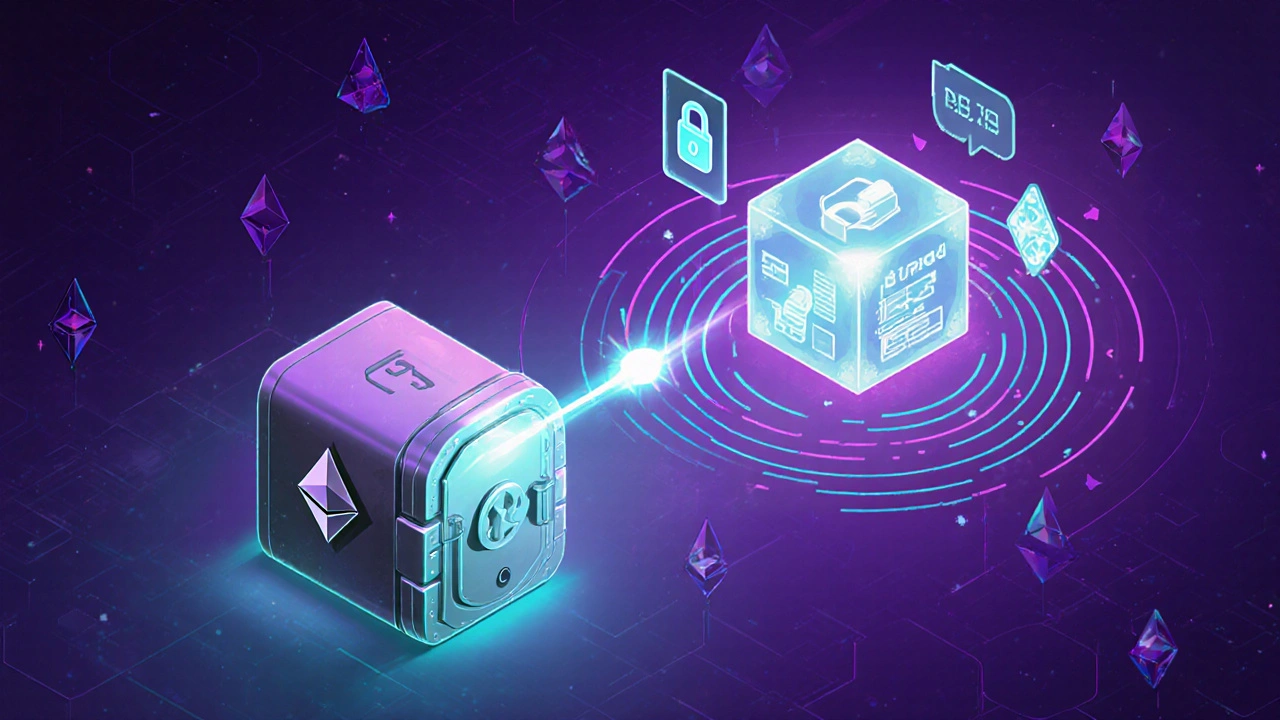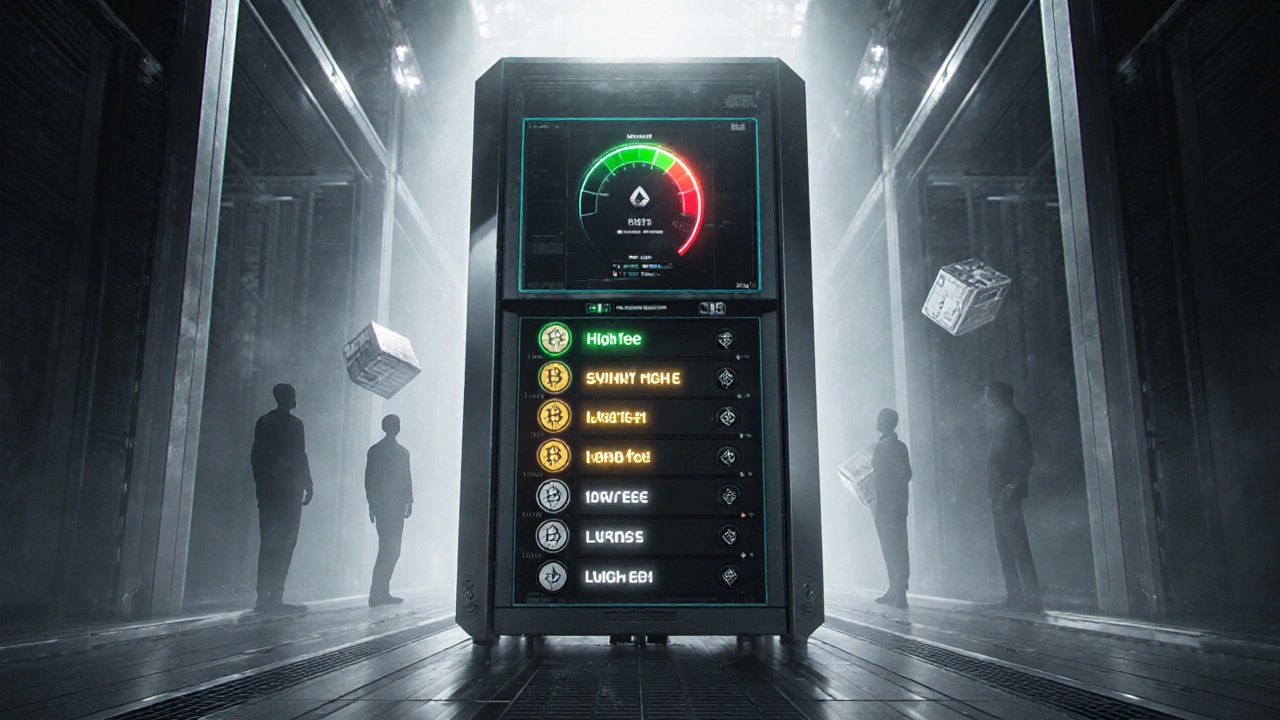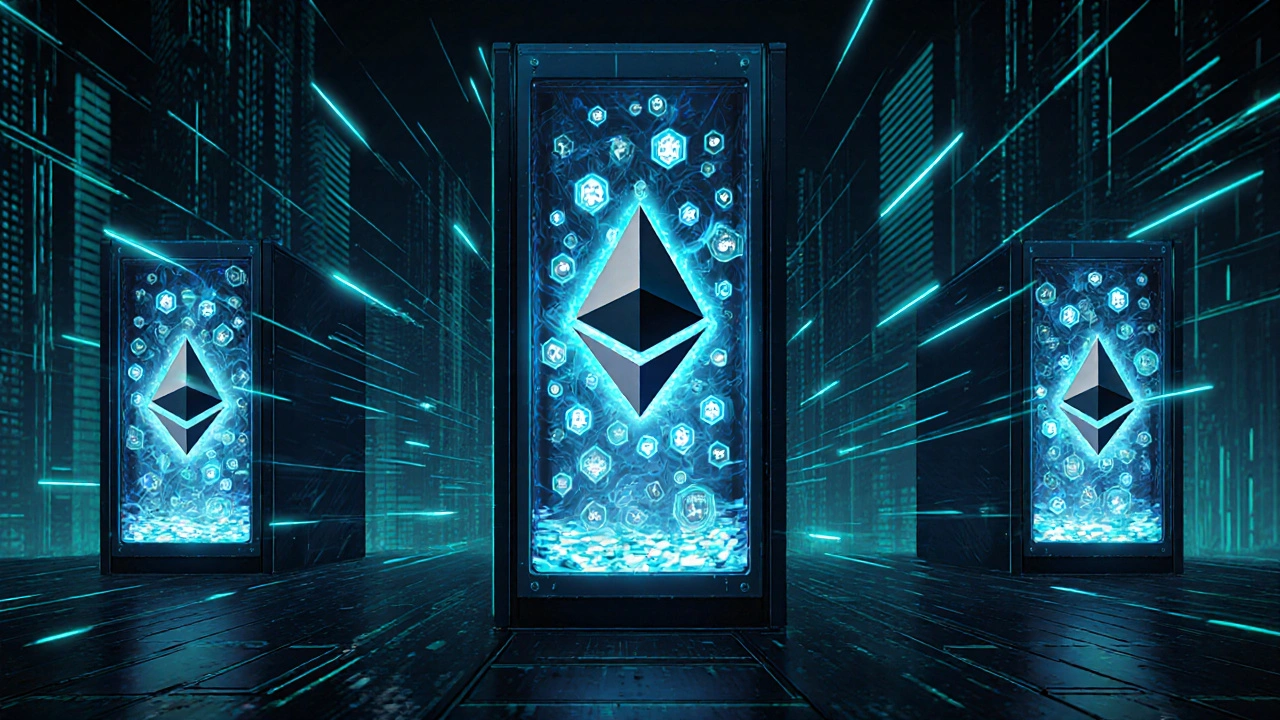Ethereum Mempool is the collection of pending transactions that have been broadcast to the network but not yet included in a block. It lives in each node’s memory, waiting for a miner or validator to pick it up.
Why the Mempool Matters
If you’ve ever wondered why some Ethereum transactions feel instant while others linger for minutes, the answer lies in the mempool. Transactions sit there until the network determines they’re worth the gas price you attached. When the market is quiet, even a low‑fee transaction can get mined quickly. When demand spikes, only the highest‑fee transactions get chosen, and the rest pile up, sometimes causing back‑log and higher average fees.
How a Transaction Enters the Mempool
- Signature and broadcast: Your wallet signs the transaction and sends it to the nearest node.
- Basic validation: The node checks the transaction hash, nonce, and signature. If anything is off, the transaction is dropped.
- Insertion into the pool: A valid transaction is placed in the node’s mempool, where it waits alongside thousands of peers’ transactions.
- Propagation: The node relays the transaction to its peers, and the mempool spreads across the network like a ripple.
This process happens in a split second, but the real drama begins when the transaction competes for inclusion in a block.
The Role of Gas Fees and EIP‑1559
Since the London upgrade, Ethereum uses a base fee that the protocol adjusts every block. Users add a priority fee (often called a “tip”) to incentivize miners or validators. The total fee you pay = base fee + priority fee.
When the network is busy, the base fee rises, and only transactions with a high enough total fee become attractive. That’s why you’ll see the mempool swell during popular NFT drops or DeFi launches; everyone is trying to out‑bid the next block’s base fee.
From Mempool to Block: The Selection Process
Every ~12 seconds, a validator (or miner, on the legacy proof‑of‑work chain) builds a new block. The selection algorithm follows these steps:
- Sort the mempool by effective fee (base + priority).
- Fit transactions into the block without exceeding the gas limit (currently 30 million gas).
- Prioritize transactions with higher nonces for the same sender to avoid gaps.
- Include any smart contract calls that offer higher fees.
If a transaction’s gas price falls below the current base fee, it may sit in the pool for many blocks, or be dropped when nodes start pruning old entries.
Pruning and Expiration Rules
Nodes don’t keep every pending transaction forever. Typical rules include:
- Maximum age (often 72 hours) - older transactions are removed.
- Low‑fee eviction - when the pool is full, the node discards the lowest‑fee transactions first.
- Replacement via “replace‑by‑fee” (RBF) - a sender can resend the same transaction hash with a higher fee, causing the node to swap the old entry.
These policies keep the mempool manageable and ensure that high‑value traffic gets priority.

Monitoring the Mempool: Tools and Tips
Developers and traders often peek at the mempool to gauge network congestion. Popular explorers (e.g., Etherscan’s "Pending Transactions" view) expose real‑time data. For deeper insight, you can run a full node and query its JSON‑RPC endpoint with eth_pendingTransactions or use specialized APIs like Alchemy’s alchemy_getPendingTransactions.
Key metrics to watch:
- Pending transaction count: A sudden jump signals a surge in activity.
- Average gas price: Helps you decide whether to increase your fee.
- Gas limit utilization: Shows how full upcoming blocks are likely to be.
Armed with this data, you can time your trades, set appropriate fees, or even front‑run profitable arbitrage opportunities.
Common Pitfalls and How to Avoid Them
- Setting too low a fee: Your transaction may sit in the pool for hours or be dropped entirely.
- Ignoring nonce ordering: If you send multiple transactions from the same address out of order, later ones will stay stuck.
- Over‑relying on a single node’s view: Different nodes can have slightly different mempool contents, especially during spikes.
Best practice: use a reputable RPC provider that aggregates mempool data from many peers, and always monitor the current base fee before broadcasting.
Summary Table
| Stage | Location | Selection Criteria | Typical Duration |
|---|---|---|---|
| Mempool | Node memory | Valid signature, correct nonce, fee ≥ node’s minimum | Seconds to hours (depends on fee) |
| Pending (network view) | Aggregated across peers | Same as mempool, but may include duplicate entries | Same as mempool |
| Block Inclusion | On‑chain (immutable) | Highest effective fee fitting under gas limit | ~12 seconds per block |
Future Outlook: What Changes Are Coming?
Ethereum’s shift to proof‑of‑stake (the “Merge”) already altered who picks transactions-validators now replace miners. Upcoming proposals (like EIP‑4844) aim to introduce “blob‑carries” that could affect how large data‑heavy transactions are prioritized, possibly reshaping mempool dynamics for roll‑up traffic.
Staying aware of these upgrades helps you anticipate fee trends and adjust your transaction strategy before the next big shift.

What is the Ethereum mempool?
The mempool is a temporary storage area on each node where pending transactions wait until a validator includes them in a block. It’s not part of the blockchain itself, but it’s essential for moving transactions from broadcast to finality.
How does gas price affect mempool priority?
Validators sort transactions by the total fee you pay (base fee + priority fee). Higher‑paying transactions are placed at the front of the queue and get mined first. When demand spikes, the base fee rises, pushing low‑fee transactions further back or out of the pool.
Can I replace a pending transaction?
Yes, using the replace‑by‑fee (RBF) mechanism. You resend the same transaction hash with a higher fee. Nodes that support RBF will discard the old entry and keep the new one.
Why do some nodes show different mempool contents?
Nodes receive transactions from different peers and may apply slightly different pruning rules. During periods of high traffic, the exact set of pending transactions can vary from one node to another.
What tools can I use to monitor the mempool?
You can use blockchain explorers like Etherscan’s pending transactions page, or query a full node’s RPC endpoint (`eth_pendingTransactions`). Services like Alchemy, Infura, and QuickNode also offer dedicated mempool APIs.


Meredith Howard
October 15, 2025 AT 23:28The mempool acts as a staging area where every pending transaction waits its turn for inclusion in the next block it is essential for the network to prioritize based on the fees attached and the current demand the mempool therefore provides a transparent view of network congestion and helps users decide optimal gas fees
Yashwanth Gouravajjula
October 20, 2025 AT 14:35From my experience the mempool can feel like a traffic jam during popular token launches.
Janiss McCamish
October 25, 2025 AT 05:41Setting a gas price slightly above the current base fee usually gets your transaction in the next block without overpaying.
Kevin Hagerty
October 29, 2025 AT 19:48Oh great another low‑fee tx stuck forever lol just sit there twiddling your thumbs while miners chase the big fish.
Kendall Storey
November 3, 2025 AT 10:55When the gas wars heat up you’ll see the mempool bloom like a wildflower – it’s the perfect time to crank up your priority fee and ride the surge.
Ashton Strong
November 8, 2025 AT 02:01Feel free to bump your fee by a modest amount; it’s a friendly way to ensure your transaction sees the light of day sooner rather than later.
Steven Hanton
November 12, 2025 AT 17:08Monitoring pending transaction counts across multiple nodes can give you a clearer picture of true network load rather than relying on a single explorer’s snapshot.
Pamela Tanner
November 17, 2025 AT 08:15For accurate monitoring it is advisable to query several reputable RPC providers and compare their mempool statistics.
Kristina Kalolo
November 21, 2025 AT 23:21Different nodes may prune transactions at varying thresholds which can cause slight disparities in their pending lists.
ravi kumar
November 26, 2025 AT 14:28If you’re unsure about the right fee level, start with a conservative increase and watch the pending pool – a quiet approach often works best.
Tia Muzdalifah
December 1, 2025 AT 05:35In my country we often see spikes during NFT drops and it’s kinda crazy how the mempool fills up fast.
Aafreen Khan
December 5, 2025 AT 20:41Honestly the whole mempool hype is overblown 😂 you can just set a modest tip and you’ll be fine 🚀
Pamela Watson
December 10, 2025 AT 11:48Everyone thinks they know the perfect gas strategy but really it’s just trial and error 😅
michael T
December 15, 2025 AT 02:55Picture this: a flood of low‑fee transactions drowning the mempool while the high‑rollers ride the waves of priority fees – pure drama!
Christina Kooiman
December 19, 2025 AT 18:01One cannot discuss the Ethereum mempool without first acknowledging its pivotal role as the nexus between transaction origination and block finality, for it is here that the market’s willingness to pay is measured against the protocol’s ever‑adjusting base fee, and this dynamic interplay determines the very speed at which value is transferred across the network. Moreover, the mempool’s transient nature-being a volatile reservoir of pending operations-means that each node’s view can differ subtly, leading to a diverse tapestry of pending transaction sets. Consequently, savvy participants must remain vigilant, observing not only the sheer count of pending entries but also the distribution of effective fees, which directly influences inclusion priority. It is equally important to recognize that the eviction policies, such as low‑fee removal and age‑based pruning, serve to keep the pool performant, lest it become a bottleneck during periods of heightened activity. In practice, the replace‑by‑fee (RBF) mechanism offers a graceful path for users to rebroadcast transactions with higher incentives, effectively superseding stale entries. While the London upgrade introduced the base fee concept, subsequent proposals like EIP‑1559 have refined the fee market, striving for more predictable and fair pricing. As the ecosystem evolves toward roll‑ups and layer‑2 solutions, the mempool’s behavior may further adapt, especially with upcoming upgrades like EIP‑4844 that contemplate blob‑carrying capabilities. Nonetheless, the core principle remains unchanged: higher‑paying transactions ascend the queue, earning a place in the next ~12‑second block interval. For developers, an intimate understanding of these mechanics enables the crafting of more efficient smart contracts and user experiences, particularly when timing is of the essence. Finally, the community’s collective monitoring tools-ranging from explorer dashboards to bespoke node queries-empower participants to make informed fee decisions, thereby mitigating unnecessary congestion and fostering a healthier network overall.